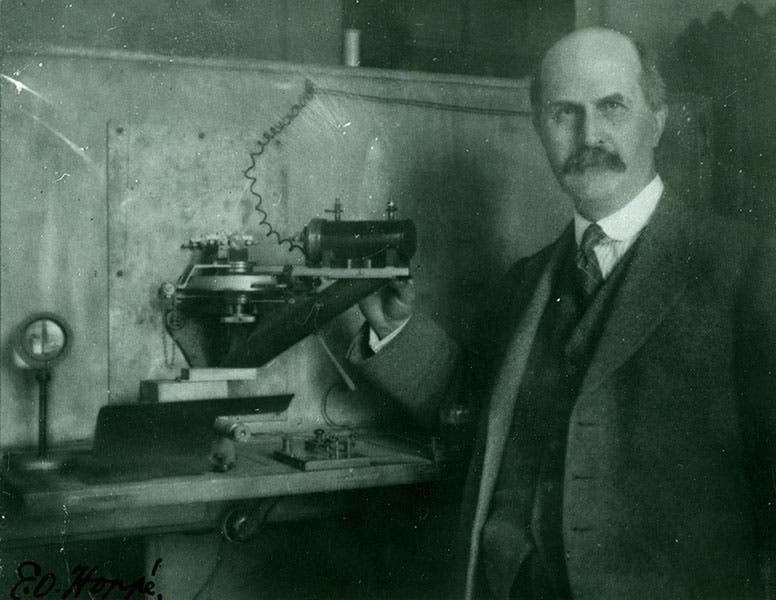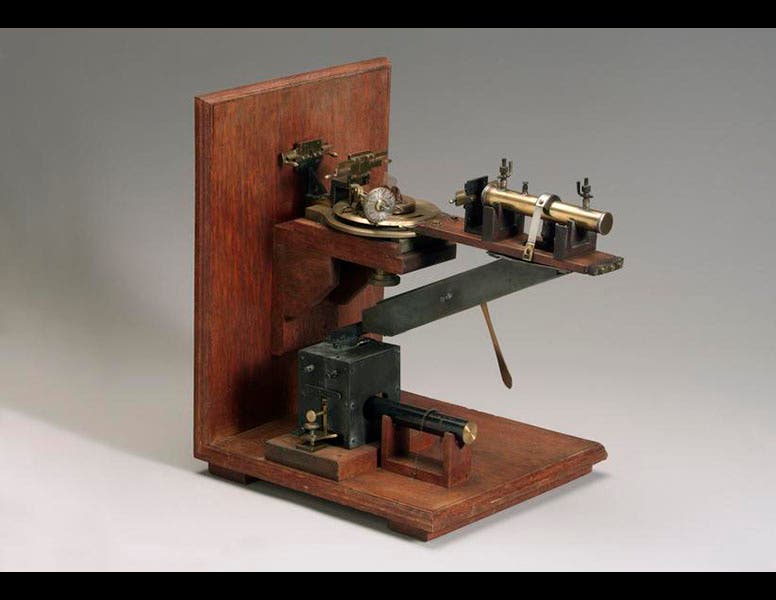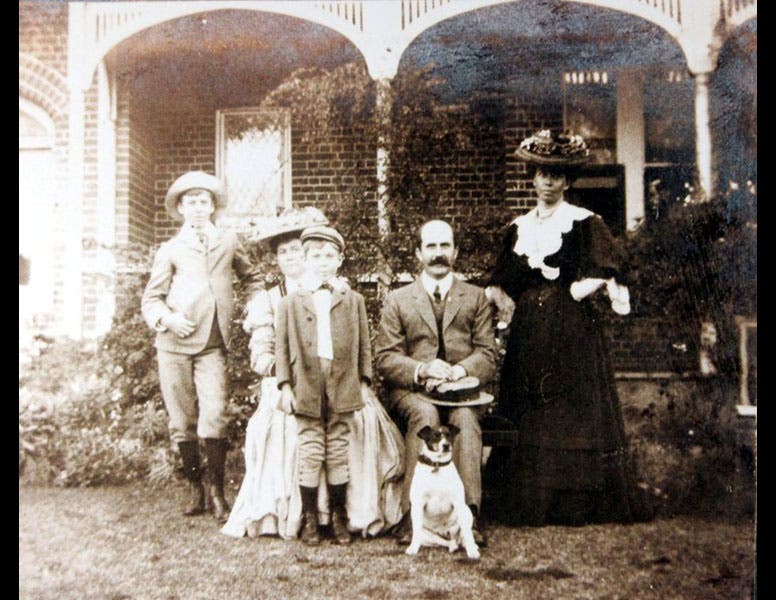Scientist of the Day - William Henry Bragg
William Henry Bragg, a British physicist, was born July 2, 1862. Educated at Trinity College, Cambridge, Bragg spent 23 years teaching at the University of Adelaide in Australia, before returning to the University of Leeds in 1909. There, working with his son William Lawrence, he invented the X-ray spectrometer in 1912, which allowed them to measure the wavelengths of X-rays. X-rays had only been discovered in 1895, and scientists were not entirely sure that they were electromagnetic waves like light and radio waves. The Braggs showed that they are, and that if you bounce X-rays off solid crystals at very slight angles, then the waves are reflected at different angles, depending on their wavelength, which one could now measure. Henry Moseley used the Braggs' X-ray spectrometer the next year to discover that the wavelength of the X-rays emitted by atoms depends on a newly discovered quantity, which we now call Z, the atomic number. In 1915, William and Lawrence Bragg jointly received the Nobel Prize for Physics, the first and only time a father-and-son team has been so honored.
The Braggs also built upon the discovery of X-ray diffraction by Max von Laue in 1912 to found the new science of X-ray crystallography, in which X-rays are bounced off crystals and allowed to produce interference patterns, by which the structure of the crystal can be inferred. They were able to work out the physical structure of sodium chloride (table salt) and a few other simple structures. X-ray crystallography would later be instrumental in determining the structure of thousands of molecules, including, most notably, that of DNA in 1953.
The images show, in order: Bragg in the lab with one of his X-ray spectrometers; a Bragg spectrometer in the Cavendish Lab Museum at Cambridge; a photo of the Bragg family taken in Adelaide—that is Lawrence standing at the left; and the blue plaque in Leeds that commemorates Bragg’s achievements.
Revised May 18, 2020.
Dr. William B. Ashworth, Jr., Consultant for the History of Science, Linda Hall Library and Associate Professor, Department of History, University of Missouri-Kansas City. Comments or corrections are welcome; please direct to ashworthw@umkc.edu.










